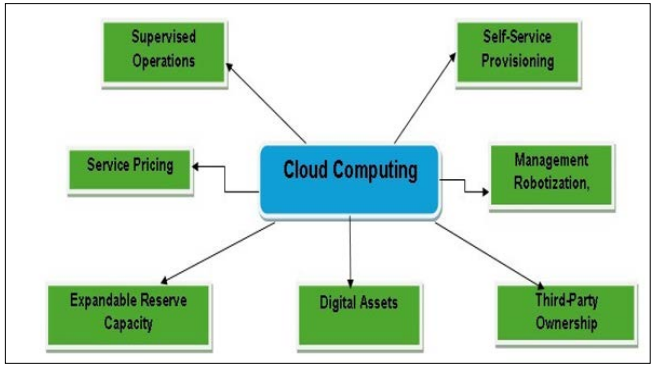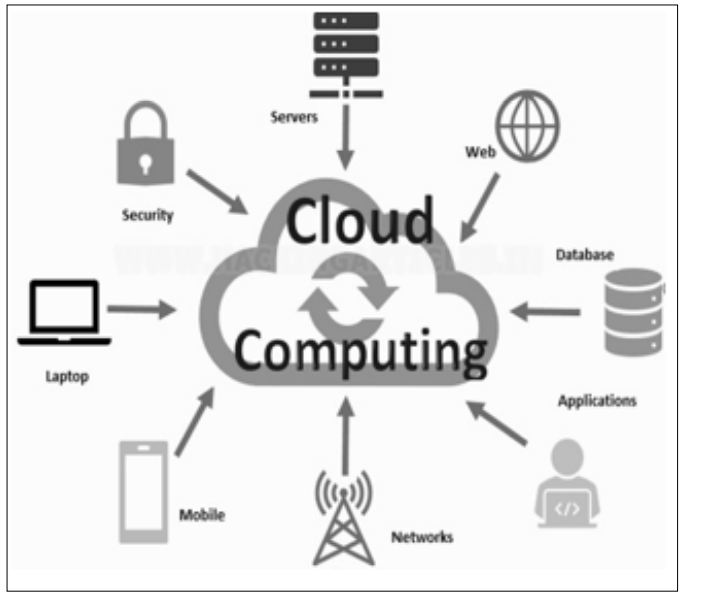Author(s): Sravanthi Mallireddy
This paper describes how cloud computing is playing an essential part in revolutionizing the way businesses operate. Using cloud services for commercial purposes can increase scalability, reduce costs, improve communication, and foster innovation. Cloud computing increases global openness, offers robust security measures, and enables the rapid use of current applications. Businesses who take on this strategic project could see increased client awareness and a competitive advantage in the digital market. But integrating cloud computing into digital transformation initiatives requires rigorous preparation, staff development, and a focus on data security. Notwithstanding these challenges, cloud computing's benefits make it an essential part of successful digital transformation initiatives.
Preamble of Digital Transformation and Cloud Computing Digital transformation is a strategic endeavor that use digital expertise to significantly alter how firms function and provide value to their clientele [1]. But in order to fully realize the promise of digital transformation, it is necessary to address concerns about data privacy, interoperability, legal compliance, and cultural barriers in addition to adhering to best practices like strategic planning and stakeholder participation, secure technology solutions, continual training, and evaluation [2].
At the core of this shift is cloud computing, which offers the essential services and infrastructure that let businesses quickly innovate, grow, and adjust to changing market conditions [3,4]. As seen in Figure 1 below: cloud-based computing. Distributing computer services via the Internet, including storage, servers, databases, software, and analytics, is known as cloud computing. Businesses can utilize and access these services on demand, without the requirement for physical infrastructure or on-premises hardware as shown in the Figure 1:Cloud Computing.
Price Tag Saving – Pay for what you use.
Responsive Deployment – Easy and fast access a broad range technology (database, storage, compute etc.) on as per the requirement.
Location Independent –Deploy your application in multiple physical locations around the world with just a click.

Figure 1: Cloud Computing.
Disaster Recovery – No environmental disruption, no natural calamity effect.
Elasticity– Instantly scale up or down the amount of resources that actually need.
Cloud computing lays the framework for digital initiatives by providing flexibility, scalability, and access to cutting- edge technologies that foster innovation and operational efficiency [5].
Cloud computing allows organizations to scale their IT resources up and down as needed, allowing them to respond quickly to market changes and consumer demands. This scalability reduces the burden of maintaining physical infrastructure and allows businesses to more efficiently control spending, especially during periods of rapid expansion or unexpected demand swings [6].
Cloud service providers provide access to cutting-edge technology like AI, ML, and big data analytics. These technologies let enterprises to use advanced tools without making major upfront costs, encouraging innovation and improving their capacity to analyze data decision-making.
Cloud computing accelerates the deployment of new applications and services, significantly reducing time to market. This agility helps businesses to experiment with new ideas, iterate quickly, and respond to customer feedback, resulting in continual innovation.
Cloud computing is essential for aiding digital transformation because it provides the infrastructure and services needed to help businesses achieve innovation and efficiency. Here are some key case studies and issues surrounding the usage of cloud comput ng in digital transformation [7].
It is increased its scalability and flexibility by migrating its whole infrastructure to Amazon Web Services (AWS). This shift has enabled Netflix to manage massive amounts of data, tailor content suggestions, and improve user experiences, defining new norms.
The hospitality platform used cloud computing to streamline its booking system, allowing it to handle variable demand and expand its global footprint. This cloud- based architecture has enabled Airbnb to deliver smooth user experiences and safe transactions, contributing to the company's fast expansion.

Figure 2: Cloud Services
By moving to a subscription-based model with Adobe Creative Cloud, the company rebuilt itself by providing cloud-based services that improve collaboration and accessibility. This move has enabled Adobe to keep a competitive edge by offering a seamless user experience across devices.
Disney used cloud computing to simplify operations and improve consumer experiences throughout its theme parks and media networks. By utilizing cloud services, Disney has expanded data analytics capabilities, providing individualized experiences for guests.
Emerging technologies greatly influence cloud computing and digital transformation, altering the way businesses operate, innovate, and create value.
Some Key Technologies and Their Effects are Listed Below: The following text should be paraphrased, maintaining the same input language and word count: The man was walking along the street when he suddenly saw a black cat run across his path.
Cloud computing is a key driver of digital transformation, providing firms with the infrastructure and capabilities they need to innovate and adapt in a rapidly changing business market, such as scalability and flexibility, allowing firms to respond quickly to market demands without the need to maintain significant on- premises infrastructure. Cloud computing's cost-effectiveness alters traditional IT spending, shifting from capital expenditures to a pay-as- you-go model that allows for better financial planning [8-20].
Furthermore, cloud technologies improve team collaboration by removing silos and fostering creativity through seamless communication and real-time data sharing. The use of contemporary technology such as artificial intelligence and big data analytics allows businesses to use data to make better decisions and create better customer experiences.
